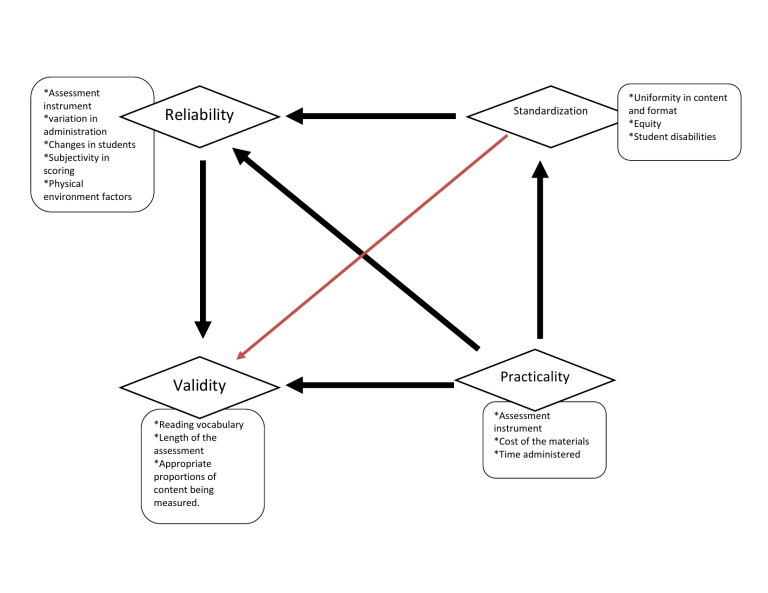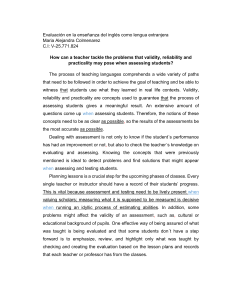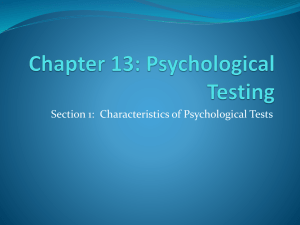
*Assessment instrument *variation in administration *Changes in students *Subjectivity in scoring *Physical environment factors Reliability Validity *Reading vocabulary *Length of the assessment *Appropriate proportions of content being measured. Standardization Practicality y *Assessment instrument *Cost of the materials *Time administered *Uniformity in content and format *Equity *Student disabilities 2. Important qualities of good assessment have four characteristics known as RSVP (Reliability, Standardization, Validity, and Practicality). We’ll first discuss the relationship between Standardization and Reliability. These two characteristics have similarity in terms of assessing students under similar conditions. In administering assessment to students, temporary factors (e.g., variation in the physical environment) should not affect the result of the students’ scores or performance. Standardization will most likely to increase when the assessment being administered by the teacher shows consistency in the results on student’s scores or performance amidst circumstances. In terms of equity, students with disabilities have their own modified instruction and assessment intended for them. We can’t administer a standardized test to all students without minding students with disabilities, because their test results or performance might only show inconsistency due to their disability. The next relationship is between Reliability and Validity. These two qualities really play a big role in assessment. In our module, it was really emphasized that assessment must first be reliable for it to be valid. However, reliability at times will not guarantee validity. There are instances that the test measures consistency but is not measuring what it supposed to measure, leading to invalidity of the test. In other words, reliability is somewhat a prerequisite of validity. On the other hand, validity assures reliability. Usually in a classroom setting, students must yield consistent results in both test scores and performance and shows accuracy in it to be both reliable and valid. For the third relationship, we have Validity and Practicality. Practicality in assessment must be easy to design, administer and score. No matter how valid the assessment is, it should not be costly and time consuming. What is intended to measure must be measured in the intended time. If the result of the assessment yield positive outcome, thus, the assessment is considered to be practical as well as valid. For the fourth relationship, we have Practicality and Standardization. Usually when we heard the word “standardization” in assessment we automatically think of the standardized test (e.g., USMCEE, NAT). These standardized tests have a uniformity in content and format and must finished in the allotted time, that’s where practicality occurs. Usually, standardized test is administered through multiple choice form (which is not costly, because it only requires pencil and pen) and covers multiple subject area to test the students’ knowledge, skills, reasoning ability and the likes. Each domain of the test has a time allotment and must finish on that specific time being set, but the time will depend on the number of items of the test. Lastly, we have the relationship between Reliability and Practicality. These two qualities have similar factors that affect each one of them which is the assessment instrument. Administering an assessment to the students, teachers must take into consideration what tools or instrument they’ll use to assess students learning. The tool must free from confusing students’ response if they’ll take the test twice or thrice. Let’s say the teacher used multiple type of test during the 1st grading in all her handled sections, in other words, she/he used the same type of test in all section. And the result of the test scores in all section shows consistency, since they reached the passing score, thus the test is reliable as well as administered in a practical way.



